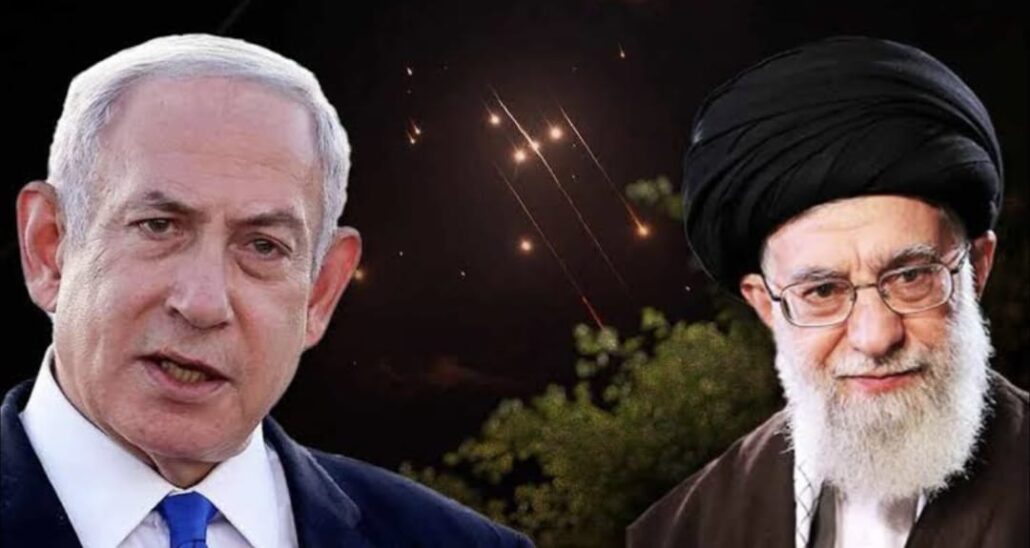
Iran launched a large-scale missile strike at Israel on October 1, 2024, causing massive damage to at least three military bases in Tel Aviv.
The strikes came in retaliation for Israel’s actions in Gaza and Lebanon, as well as the assassinations of leaders from the Islamic Revolutionary Guard Corps (IRGC), Hamas, and Hezbollah.
The IDF, on Wednesday evening, admitted losses to the airbases and said that at least one hundred structures were damaged during the Iranian strikes, photos of several of them have gone viral on social media.
Despite the ban imposed by Israel on photographing the damage caused by Iranian retaliatory strikes, several videos of the damage have gone viral on social media.
Media in Palestine reported that 20 warplanes were damaged during the strikes.
Following the missile strikes, Israeli Prime Minister Benjamin Netanyahu vowed to retaliate, declaring that Iran had “made a big mistake” and would “pay for it.”
The United States, a long-time ally of Israel, assisted in thwarting the Iranian attack
As the conflict between Israel and Iran intensifies, here’s a look at the military capabilities of both nations:
Nuclear Capabilities
Iran
Iran does not possess nuclear weapons but has an advanced nuclear program that many experts believe could eventually produce a bomb. While Supreme Leader Ali Khamenei has issued a fatwa against the development of nuclear arms, recent threats from Israel and the US could push Iran to reconsider its stance.
Israel
Israel is widely believed to have approximately 90 nuclear warheads, although it has never officially confirmed its nuclear arsenal. Its nuclear capability provides a strong deterrent and adds significant weight to its overall military power in the region.
Ballistic Missiles
Iran
Iran has a formidable ballistic missile arsenal, boasting at least 12 types of medium and short-range missiles. Key among them are the Khorramshahr and Sejjil missiles, with ranges of up to 2,000 km, capable of reaching targets throughout the Middle East, including Israel.
Israel
Israel’s ballistic missile arsenal includes the LORA, with a range of 280 km, and the Jericho-3 missile, which can reach between 4,800 and 6,500 km, allowing Israel to strike deep into enemy territory, even as far as Iran.
Air Defense Systems
Iran
Iran has a diverse array of air defense systems, including the Russian-made S-300 and locally produced Bavar-373, designed to intercept aircraft and long-range missiles. These systems are complemented by short and medium-range missile defenses such as the MIM-23 Hawk and 9K331 Tor-M1.
Israel
Israel’s multi-layered missile defense system is one of the most advanced in the world. The Iron Dome is highly effective at intercepting short-range rockets, while the David’s Sling and Arrow Systems defend against medium and long-range threats, giving Israel a comprehensive shield against missile attacks.
Naval Forces
Iran
Iran’s navy is one of the largest in the region, with 17 submarines, 68 patrol and coastal combatants, and seven corvettes. It also has 12 landing ships, making it capable of supporting amphibious operations in regional waters.
Israel
Israel’s navy is smaller but technologically advanced, featuring five submarines and 49 patrol and coastal combatants. Its naval strategy focuses on precision and deterrence, with its submarines believed to be equipped with nuclear capabilities, ensuring second-strike potential.
Air Force Capabilities
Iran
Iran’s air force includes 312 combat-capable aircraft, though many are older models from the US and Soviet Union. The IRGC also operates a smaller air fleet with 23 combat aircraft. While its air power is not as modern or extensive as Israel’s, Iran has invested in missile technology to compensate for its aerial limitations.
Israel
Israel has a more advanced and better-equipped air force, with 345 combat-capable aircraft and 43 attack helicopters. Its fleet includes state-of-the-art US-made F-35 stealth fighters, giving Israel a decisive advantage in air superiority and precision strike capabilities.
Ground Forces
Iran
Iran’s ground forces are sizable, with 610,000 active personnel across the army and IRGC. It possesses over 10,500 battle tanks and more than 6,800 artillery guns, giving it a strong presence on the battlefield. Iran’s reliance on its large ground force reflects its defensive posture and its focus on asymmetrical warfare.
Israel
Israel’s ground forces consist of 169,500 active personnel, backed by highly advanced technology and training. With 400 battle tanks, 530 artillery guns, and over 1,190 armored personnel carriers, Israel’s smaller but more technologically advanced army can deploy rapidly and execute precise operations with high efficiency. (With inputs from Al Jazeera)
